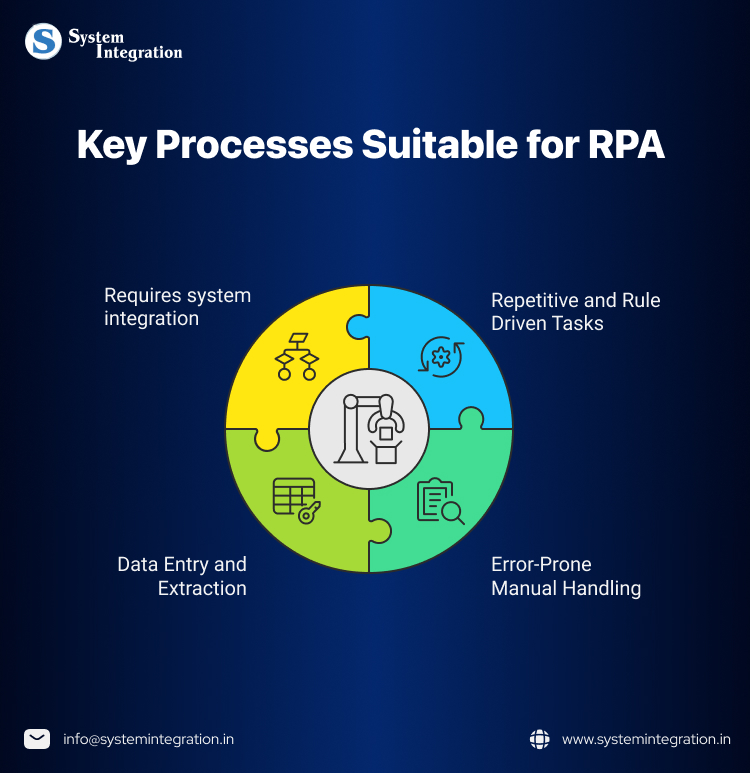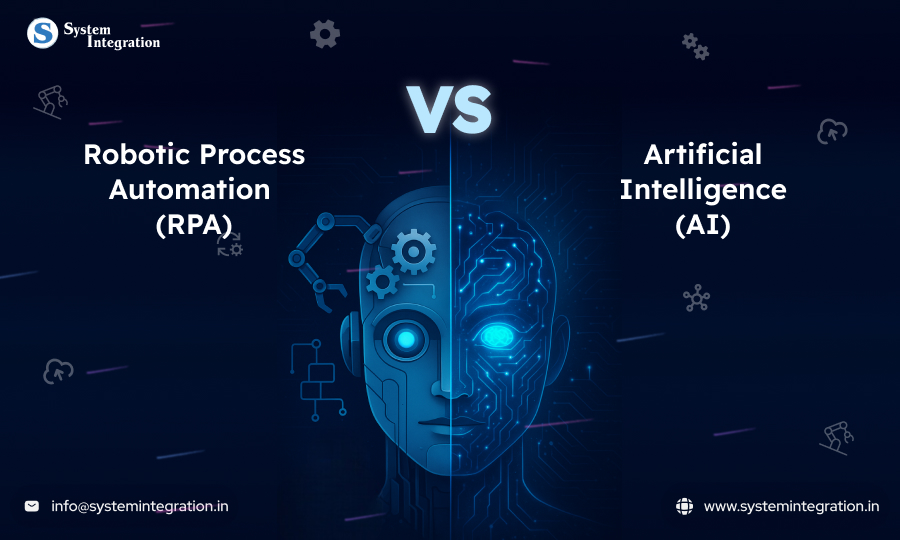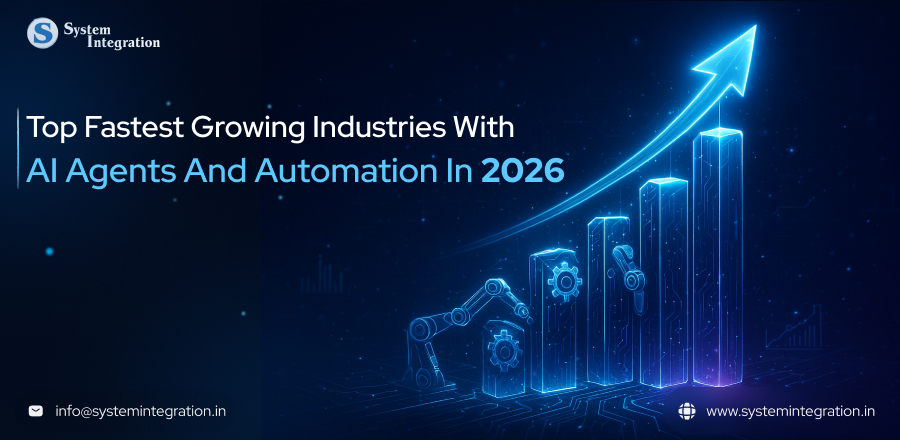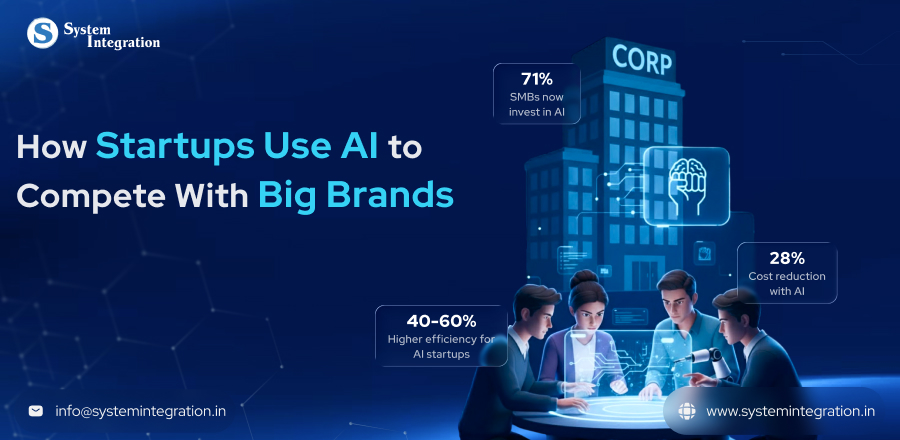Introduction
Today, businesses everywhere are under relentless pressure to enhance decision-making, cut costs and improve operational efficiency. Two dichotomous technologies which often crop up in these discussions are Artificial Intelligence (AI) and Robotic Process Automation (RPA).
The methods and abilities of both parties are vastly different even as they pursue this common objective. The focus of RPA is on automating structured, rule-driven work. In contrast, AI incorporates intelligence into workflow automation, thus enabling it to do things like learn from behavior, think and make decisions using unstructured data. It’s important to know the difference.
AI can drive creativity and deeper understanding, RPA is about speed and consistency. This article looks at the distinctions between RPA and AI, and discusses why these are so critical.
First Let’s Comprehend, What is RPA?
RPA is short form of Robotic Process Automation, it uses software robots to automate repetitive and rule based tasks. It even can perform tasks like copying information between applications and processing invoices. Its usefulness lies in improving business efficiency by increasing speed and accuracy, also reducing the operating expenditure.
This lets the employee free and can focus on some important tasks like complex value adding activities. RPA bots interact with the digital systems by mimicking human actions, like using the keyboard and mouse, to complete the various tasks across various industries.
How RPA Works: Rules-Based, Repetitive Task Automation

Identification of Processes
- Businesses will first look for tasks that are repetitive, predictable and rule governed.
- Copying information from emails into spreadsheets or validating that an invoice number corresponds to some other related information.
Creation of Bots
- Software robots are programmed to act like humans and perform tasks such as clicking, typing and copying/pasting.
- There’s no complex coding involved, as most of the RPA tools have a drag-and-drop function.
Rule-Based Execution
- Beside that, bots only obey rules and flows construct set in advance.
- They don’t make decisions — they only follow what’s programmed into them.
Task Automation
- Bots perform the same boring task at incredible speed without ever getting tired.
- They act just like a human operator with applications, systems and databases.
How is AI Different From RPA?
| Criteria | RPA (Robotic Process Automation) | AI (Artificial Intelligence) |
|---|---|---|
| How it works | Handles repetitive structured and rules based tasks. | Manages and work on unstructured data and handles tough challenges |
| What it does | Mimics human action on computer | Simulates human thinking, like understanding language and making predictions |
| Implementation | Usually easier to implement | Can be more complex |
| Judging ability | Makes judgement based on predefined rules | Uses cognitive learning, and predictive analysis |
Why the differentiation Is Important for Businesses
Steer Clear From The Risk Of A Bad Investment
A lot of businesses are over-resourcing into AI when basic RPA might do. Understanding that RPA drives automation of repetitive, predictable work and AI interprets, learns, and predicts leads to a more intelligent spend of budget.
That awareness eliminates project failures, speeds up the automation agenda and guarantees that enterprises select tools which are fit for their purpose.
Selecting the Right Tool for You
Choosing whether to go for RPA vs AI is entirely based on your business goals. RPA is perfect for structured activities, such as filling in forms or generating reports. AI is best-suited for more advanced functions such as customer sentiment analysis or demand forecasting.
Companies that can accurately map problems to the correct technology earn efficiencies, productivity, and competitive differentiation without overspending.
Impact on ROI, Scale and Strategy
RPA gives you instant wins with actual dollar savings/increased efficiency. AI is an investment with a longer time horizon that helps make decisions on the basis of data.
Blending of both the technologies ensures a sustainable growth and supports businesses in rational scale automation. Businesses that use them strategically realize higher ROI, scalable and flexible function capabilities and long-term competitiveness.
Future Trends
Intelligent Process Automation (IPA)
Intelligent Process Automation (IPA) melds RPA with AI, machine learning and analytics to automate both rules-based and knowledge-based work. Unlike RPA, IPA is able to work with unstructured data, learn from results and adjust processes.
Enterprises are embracing IPA to enable intelligent decision making, increased efficiency and improved scale as the race toward full scale digital transformation continues.
Industry Adoption Patterns
Automation is being adopted in different sectors at different paces. In banking and finance, robotics process automation is used for compliance and fraud detection in healthcare, AI is used for diagnostics as well as patient care automation. Personalization in retail runs on AI. While bots are used for predictive maintenance in the manufacturing line.
Recap of Key Differences
RPA is all about productivity by automating routine, rule-based tasks, while AI brings smartness to the way we work, by learning from data and making predictions. Each has particular strengths, but is most effective in conjunction with the other.
To avoid confusion, businesses need to understand these differences, but also to make sense of how they can be brought together in a seamless automation strategy that can act in concert while targeting pace and deployment at the same time as it leverages efficiency with intelligence for real digital transformation.
FAQs
RPA is about automating rules-based tasks that are repetitive. While AI capabilities have to do with cognitive ones, making decisions, understanding natural language and predictive analytics.
Yes. And when combined, RPA does structured, rule-based work while AI brings intelligence through unstructured data handling and pattern learning and process adaptation. Resulting in smooth processing of complex data.
RPA is used across industries such as banking, insurance and logistics for mundane, back office functions. So, AI aids in healthcare, retail and customer service since it involves discovering patterns, such as predictive insights, personalization or natural language capabilities that can be used across a variety of sectors.
A business must choose RPA when it needs to automate a high volume of simple, repetitive tasks that follow clear, predefined rules and involve structured data.





